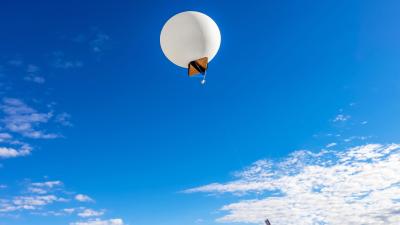The shooting down on 4 February 2023 by the United States off the Carolina coast of a Chinese high altitude balloon (HAB) sparked a series of claims and counter claims from China and the United States. It was also the catalyst for the shoot downs between 10-12 February of three other objects over the United States and Canada. These events raise multiple legal issues, not all of which can be comprehensively assessed at the time of writing as investigations remain ongoing. Nevertheless, some key international legal issues have arisen. This contribution will focus on the Chinese HAB and the US response. The HAB first appeared over the Aleutian Islands in late January, before passing over Alaska and the Canadian provinces of British Colombia and Alberta, and then over the US border near Montana before making its way over the American heartland to the Atlantic coast. The US Air Force shot down the HAB when it was over the US territorial sea. The HAB was uncrewed, but was reported to have some level of manoeuvrability.
US Airspace
The US view was that the HAB entered US airspace without permission and had violated US airspace. China did not contest this position, acknowledged that the HAB was of Chinese origin, and that the HAB had experienced a malfunction which caused it to pass over the US. The US claimed the HAB was operating at approximately 60,000 feet. The 1944 Chicago Convention on International Civil Aviation has 193 parties and Article 1 makes clear that “every state has complete and exclusive sovereignty over the airspace above its territory”. Article 2 extends that sovereignty to the territorial sea, which is also reaffirmed by Article 2 (2) of the 1982 United Nations Convention on the Law of the Sea.
The Chicago Convention does not define the limit of vertical airspace, which is unsurprising given it was negotiated in 1944 in an era that predated modern jet aircraft and space flight. While the limits of national airspace have remained undefined, state practice has settled on 60,000 feet as the upper limit. While current commercial and military aircraft operate within a range of 25,000-35,000 feet, between 1969 and 2003 the Anglo-French supersonic Concorde regularly flew a commercial trans-Atlantic service at 60,000 feet.
US response
The US response to the HAB was to monitor its flight utilising procedures under the Cold War era North American Aerospace Defense Command, which is a joint Canadian/US initiative. A decision was initially made not to engage the HAB because of the potential danger to human life due to the potential debris scatter from such a response. This equation changed once the HAB was over the US territorial sea.
The use of force by the US Air Force in firing a missile to bring the HAB down raises issues as to the legal justification for such conduct. Was this an act of self-defence? While the HAB had clearly undertaken an incursion into US airspace and therefore violated US sovereignty, did these actions meet the threshold for the exercise of self-defence? The HAB did not appear to possess any weapons systems and so was not capable of launching an attack. While it was clearly not benign, the risk posed to the US by the HAB appeared minimal. This was clearly the assessment that the US military and President Joe Biden made in allowing the HAB to pass over North America for seven days. The US response is better classified as a law enforcement action. There had been a clear violation of US law and international law yet the US response options were limited as the HAB was not capable of being escorted to a safe landing place, could not be tethered, and China was not offering to remove the balloon from US airspace. Shooting down the HAB was the only viable law enforcement option under the circumstances. Another consideration was that once the HAB passed beyond US airspace and was over the Atlantic Ocean, US responses consistent with international law would have become limited.
China’s response
China’s response to the incident acknowledged the HAB was Chinese, to claim force majeure, that the US response was an over-reaction, and reserved its rights to take other actions. Claims of force majeure are well established in both domestic and international law. Article 23 of the Draft Articles on State Responsibility recognise that force majeure can constitute a circumstance that precludes international wrongfulness if an act is due to an “irresistible force or of an unforeseen event, beyond the control of the State.” It has been reported that the HAB was launched from China’s Hainan Island and that unexpected prevailing winds carried it across the Pacific to North America. Even if the HAB was blown off course, it can be argued that China assumed the risk of that situation occurring, which defeats a force majeure argument.
The claim of force majeure can also only have been made if China accepted that the HAB was within US airspace. What is unknown is whether the HAB’s altitude varied according to weather and other atmospheric conditions. The US military, for example, was reported in 2019 to be developing HABs that could operate at 65,000 feet. The precise operational limits of the Chinese HAB are unknown, however it is possible that depending on a range of variables it could have been within and beyond US airspace at certain times. Whatever the precise altitude the HAB was at any particular time, China clearly acknowledged it should not have been where it was.
Near-Space
This incident has raised multiple legal issues. Some will be resolved in due course – such as whether the US takes the view that the HAB is Chinese property and should be returned to China following recovery and inspection. More particularly there has been a focus on so-called ‘near space’; that is a zone between national airspace and outer space which is being used for military purposes by various governments. Those purposes extend from the use of high altitude surveillance balloons, drones and other objects, to the deployment of potential hypersonic weapons. These technological developments pose new challenges for international law, including the law of armed conflict. In the first instance, they may be the catalyst for a push to bring international legal clarity to the upper limit of national airspace and the areas beyond. The 1944 Chicago Convention has well served the international community since the end of World War II, however, its limits may now be stretched by technological developments which the 2023 HAB incident has highlighted.



